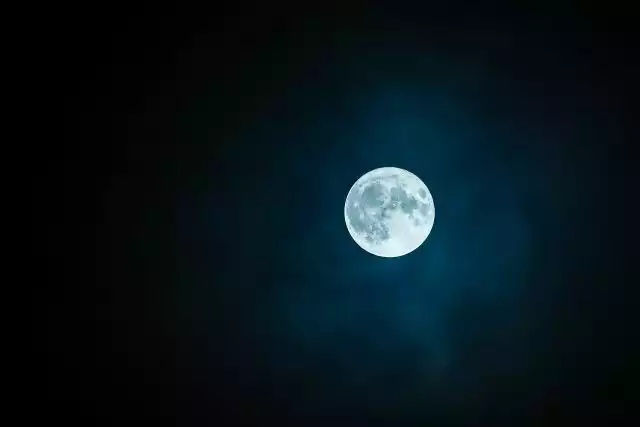‘We have liftoff’: 3 ways upcoming lunar missions can engage students

Alongside the science behind traveling into space, experts suggest the impending 55th anniversary of Apollo 11 landing on the moon on July 20, 1969, is also an opportunity to help students gain media literacy skills by examining the misconceptions around past lunar missions and how to assess and debunk those claims.
” That’s a really crucial lesson to additionally show, regarding what science is and is not,” Petro says. “It has to do with reviewing a theory. You need to go right into it claiming, ‘I don’t know the solutions.’ Finding responses is the pleasure of doing scientific research.”
“You wish to focus on the exciting and brand-new for this generation, because I think [lunar missions] have actually been positioned as ‘been there and done that’ for 50 years,” claims Siegler, who is additionally a study scientist with the Planetary Scientific Research Institute. “I actually believe getting the idea that this is new and amazing is necessary.”
Some experiments include considering surface temperature level on the ground at different locations, supplying educators a means to discuss fundamental physics such as thermodynamics. Various other future missions– like VIPER (Volatiles Examining Polar Exploration Rover), which will go to the moon’s south pole and drill searching for ice– supply chances to draw links to geology and chemistry.
“That’s a very essential lesson to likewise show, about what scientific research is and is not,” Petro states. “It’s concerning evaluating a theory. Finding answers is the happiness of doing scientific research.”
American astronaut Edwin “Buzz” Aldrin strolls externally of the moon alongside the American flag throughout the NASA Beauty 11 objective on July 20, 1969. Aldrin was the 2nd person to stroll on the moon after Neil Armstrong.
Hulton Archive through Getty Images
NASA has actually planned numerous goals right into room in 2024, consisting of SpaceX Crew-8, which launched on March 3 and sent three NASA astronauts to the International Spaceport Station. Artemis II, which will certainly send out four astronauts around the moon, was planned for this year yet has actually been delayed to 2025.
“I actually assume obtaining the concept that this is exciting and new is important.”
Petro suggests trainees would certainly take pleasure in involving with the topic with their own inquisitiveness as opposed to being told to finish a series of memorizing tasks with a right or wrong solution. He states science is much less about proper and incorrect responses and more regarding asking inquiries and refining them.
Siegler says the field of planetary sciences incorporates multiple techniques, from climate scientific research and geology to engineering to chemistry. Not just do these areas play a part in aiding researchers understand the lunar surface– they likewise give details that can assist future crewed goals gear up for their journeys.
When NASA first sent humans to the moon in 1969, researchers really did not recognize exactly how old the moon was, just how it formed, and even the processes acting on it, states Noah Petro, a lunar researcher and job scientist for Artemis III. Over the previous nearly 6 decades, even more has actually been obtained, including that the moon likely created very early in the solar system and underwent its advancement different from Earth.
Now an associate professor of global sciences with the University of Hawaii, Siegler is thrilled by the upcoming crewed missions to the moon– and he sees possibilities where educators can aid their trainees acquire a feeling of understanding and expectancy of this future historic event.
Bob Riddle, a NASA solar system ambassador and former planetarium director for the Kansas City College District in Missouri, states one method to assist instructors expose some of those insurance claims is to ask trainees to consider how many NASA employees at the time– consisting of famed mathematician Katherine Johnson, whose work aided push John Glenn into orbit– would certainly have been associated with developing a phony story and concurring for the past 55 years to keep the key.
Teachers can ask students ahead up with inquiries around the lunar goals that intrigue them and after that discover them. Trainees can walk and fill a backpack around their neighborhood, thinking concerning the quantity of power needed for that job compared to an astronaut walking on the moon, where there’s a lot less gravity than Planet, in a space suit.
Together with the science behind taking a trip right into room, specialists suggest the impending 55th anniversary of Apollo 11 landing on the moon on July 20, 1969, is also a possibility to help trainees gain media literacy skills by checking out the misconceptions around past lunar goals and just how to analyze and debunk those cases.
Educators can offer gain access to and straight students toward original resources around human spaceflight. And they can teach students what makes an info resource trustworthy and what may not.
The lunar goals of the 1960s and very early 1970s may check out like ancient history to trainees– and that indicates they can be persuaded by tales that imply these events really did not occur. Helping provide pupils with tools to examine the media they’re taking in, from paper coverage of the day Neil Armstrong took his primary step on the moon to archived televised accounts of the landing, can give them extra self-confidence in trusting what they see.
1 moon2 NASA and SpaceX
3 Planetary Scientific Research
4 Scientific Research
5 Scientific Research Institute
« Ozempic could make low- or even alcohol-free beer and wine a lot more popularDemocratic donors are threatening to stop giving unless Joe Biden drops out »
